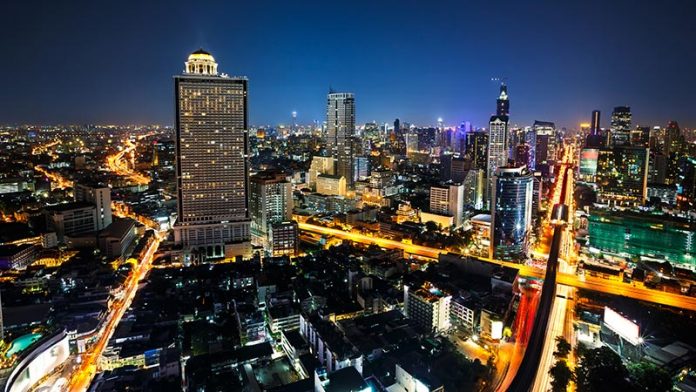According to reports in the Mastercard Global Destination Cities Index (GDCI 2017), Thailand’s capital, Bangkok, once again ranked as the number one city worldwide, followed by Britain’s capital, London.
It’s a ringing endorsement with Bangkok having received a massive 19.4 million international overnight visitors during 2016. The Thai capital also ranked fifth on the list of international overnight visitor spending with some 465 billion baht being emptied into the coffers of retailers and vendors in that 12-month period.
Bangkok is expected to be visited by around 20.2 million people this year, a four percent growth year-on-year.
Rounding out the top five cities were Paris (third), Dubai and Singapore while Kuala Lumpur finished eighth to give Southeast Asian capitals three of the top eight positions.
The GDCI 2017 results noted that leisure was the primary purpose for 88.6 percent of visitors to Bangkok while business, potential and real, accounted for only 11.4 percent.
Naturally, given the fact Bangkok has a plethora of high-end shopping malls, shopping came out as the largest expenditure item of visitors at 22.9 percent of money spent ahead of accommodation, which accounted for 22.6 percent of outlays and local services which made up 21.5 percent of spending by visitors.
The GDCI 2017 covered 132 top traveller destinations worldwide and looks to analyse why people travel to the places they do and what they are looking for when they do go.
As well, the data looks at the top five ‘feeder’ countries for each destination. In Bangkok’s case it’s probably little surprise that China was easily the primary nation for overseas visitors, with 34.3 percent of the 19.4 million coming from there. Second-highest was Japan, with just 7.1 percent while South Korea made up 4.3 percent of visitor numbers.
Fourth and fifth places were occupied by India (4.1 percent) and the United Kingdom at just 3.8 percent of overnight visitors. This, of course, represents a major difference to the numbers which were coming to the Kingdom even a decade ago and shows just how quickly traveller demographics can move over time.
The senior vice-president for Asia-Pacific of Mastercard Advisors was quoted as saying that the Asia-Pacific region is the fastest-growing for international travel and ‘will no doubt serve as a key source of in-market economic growth and development.’
He stressed the need for governments and the private sector across the region to continue to invest in ‘smart networks and infrastructures that provide seamless experiences for residents, tourists and business travellers. Cities that do so will realize their potential…and reap the economic benefits of increased visitors and greater spending.’











